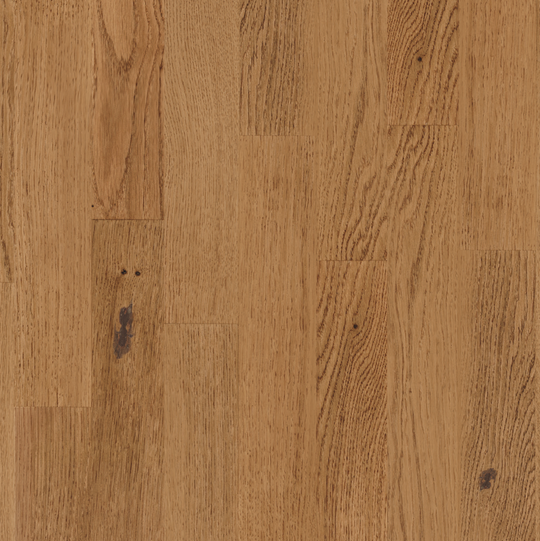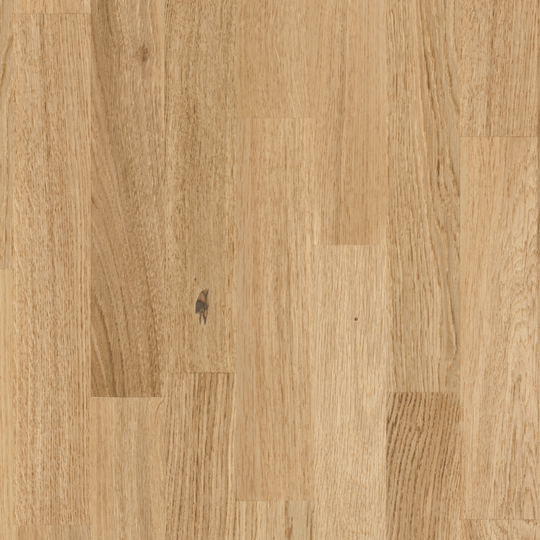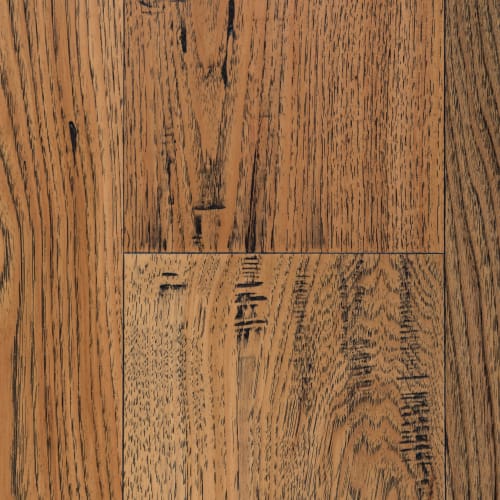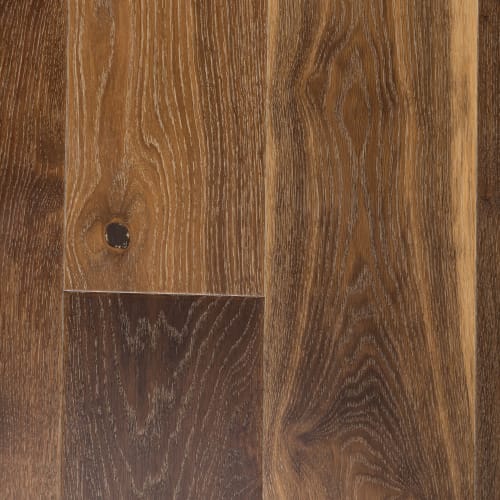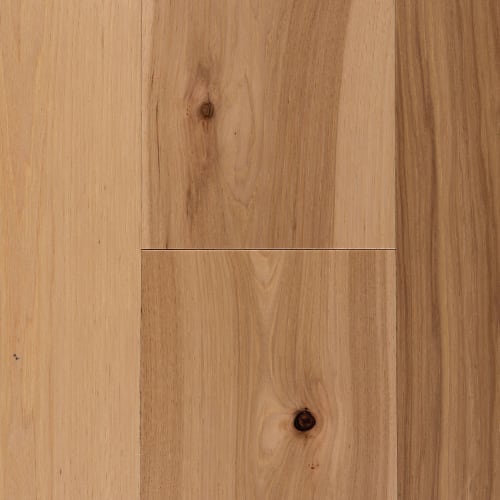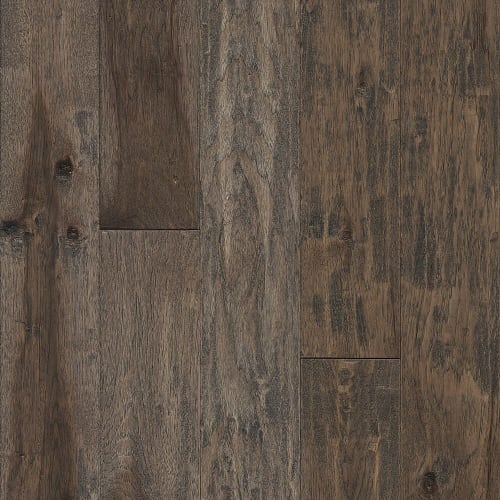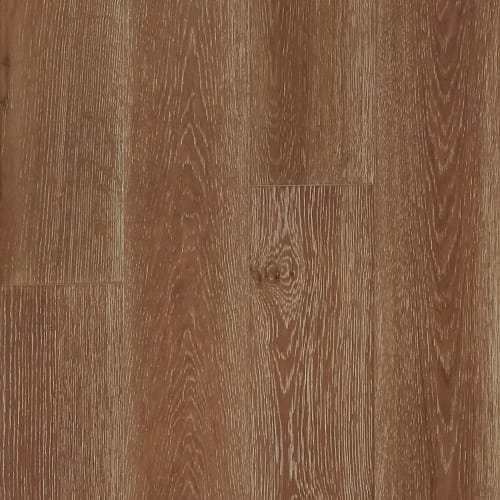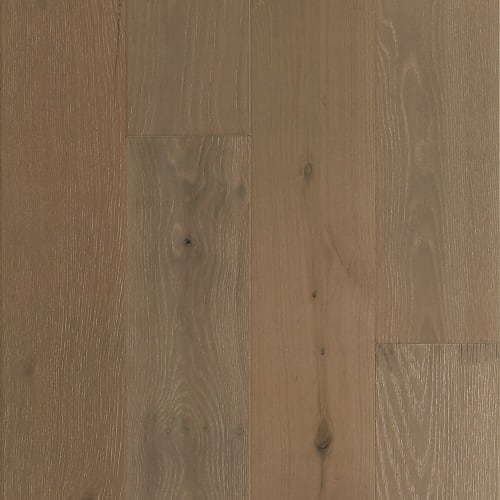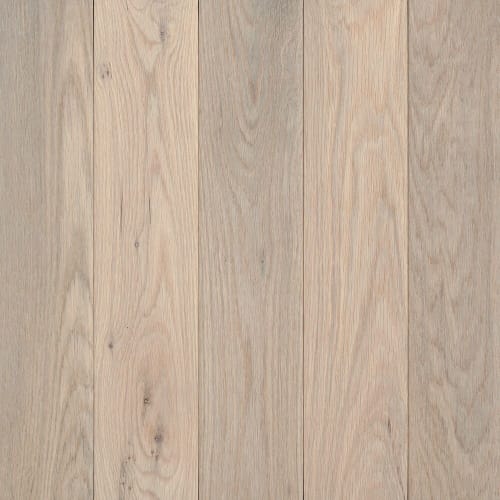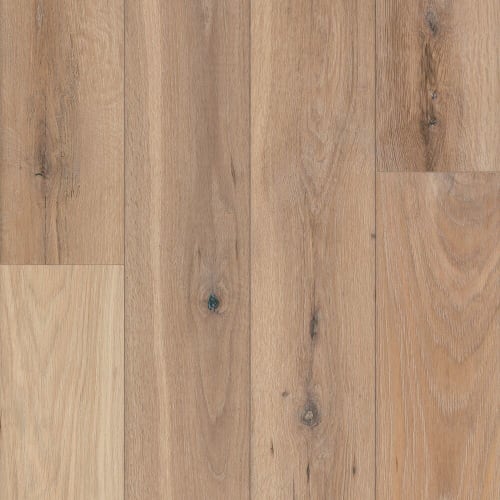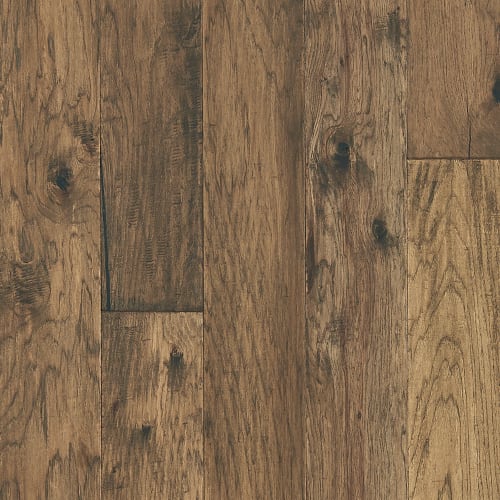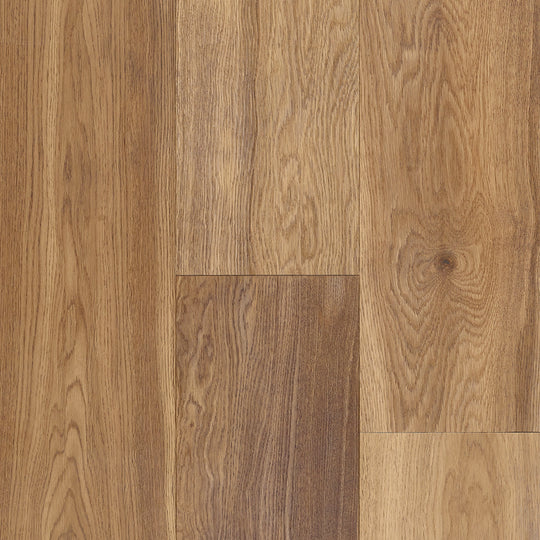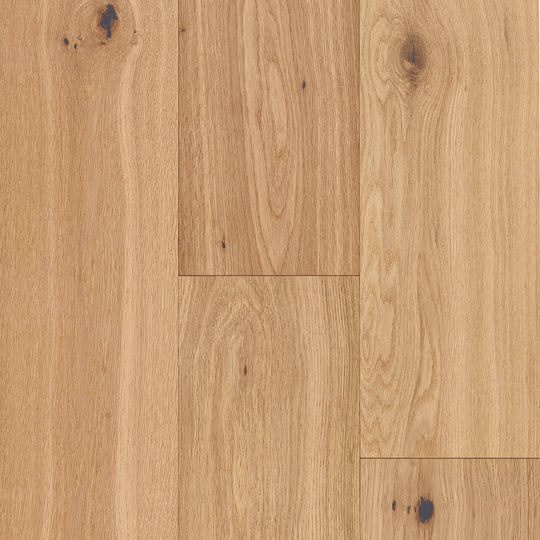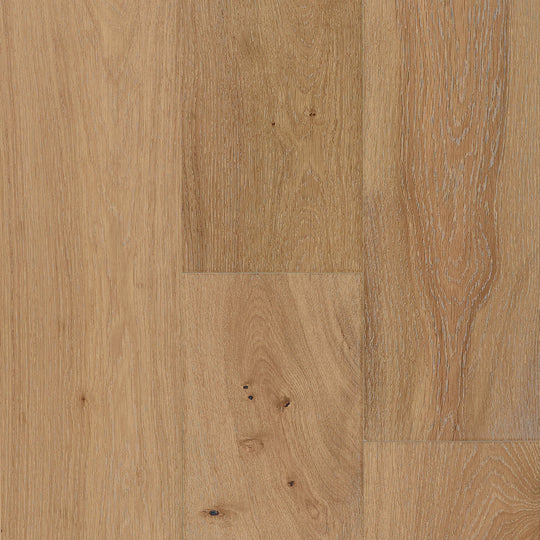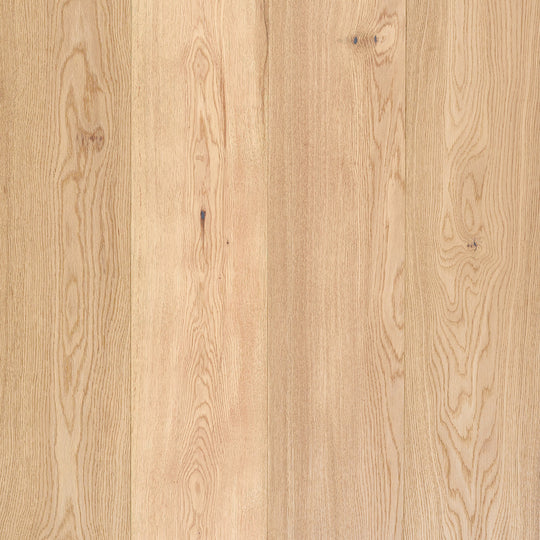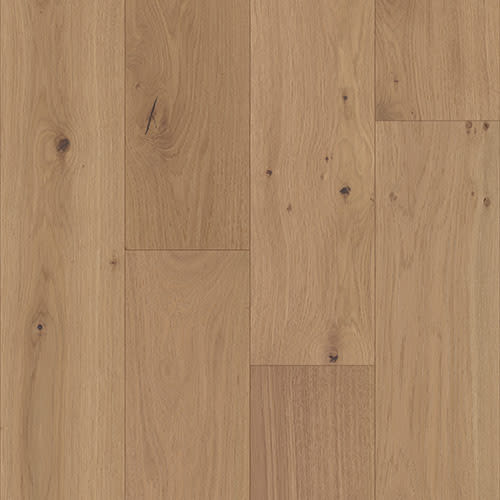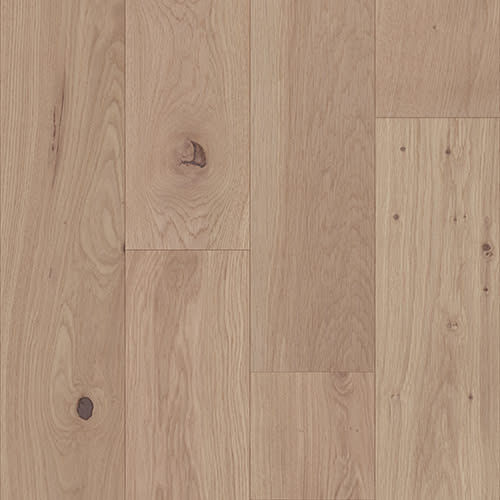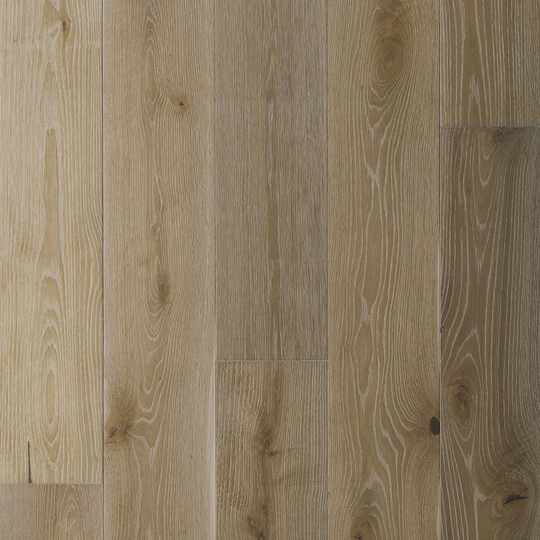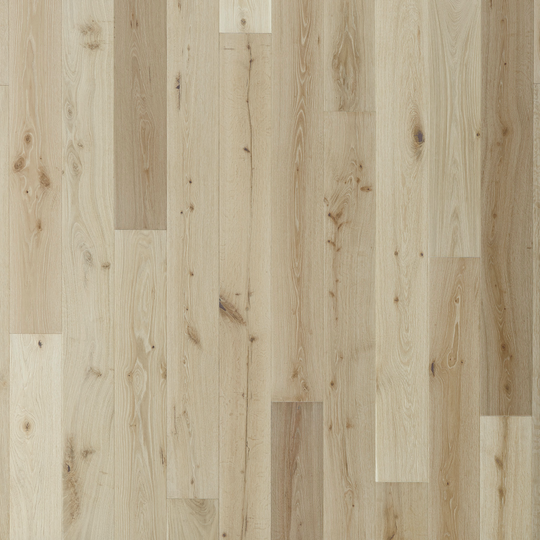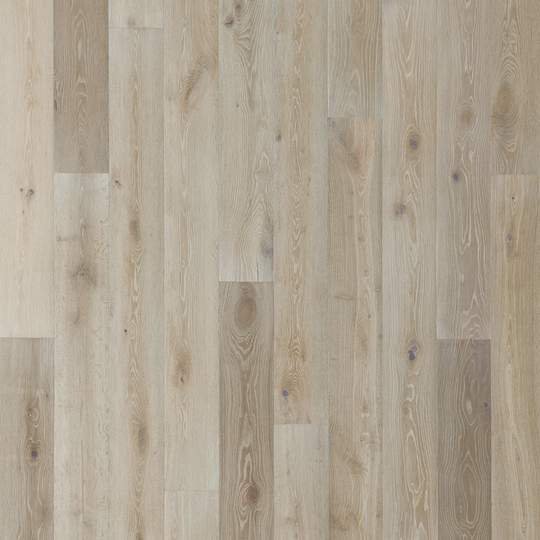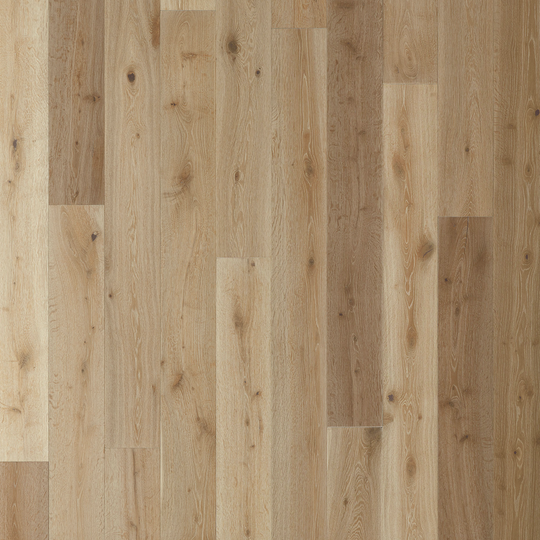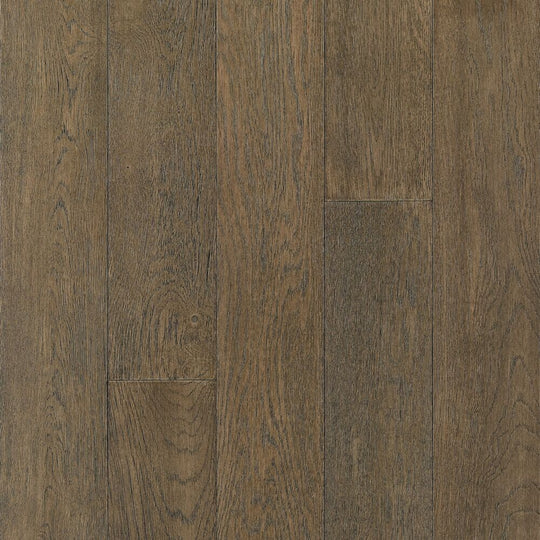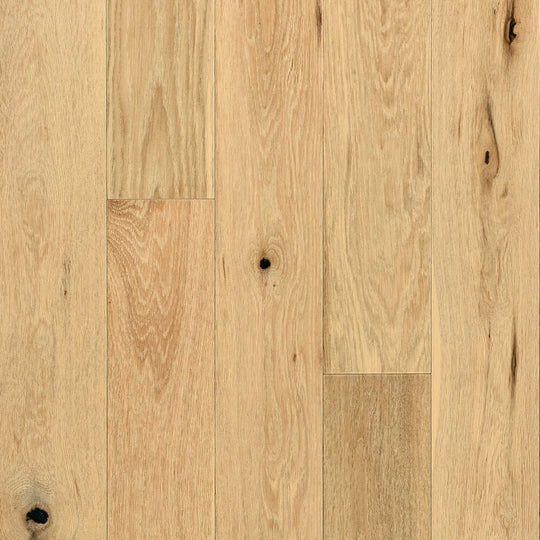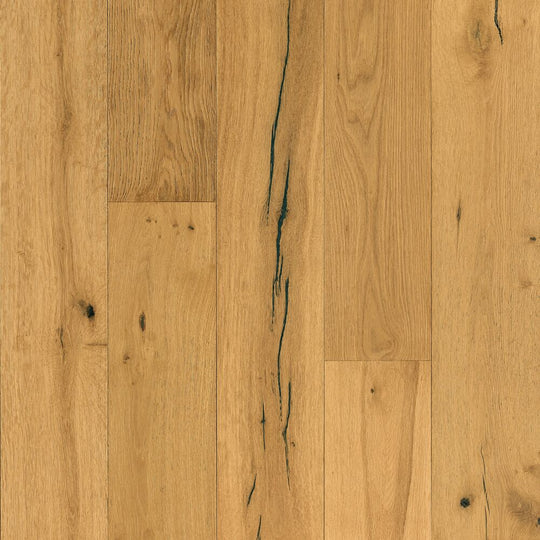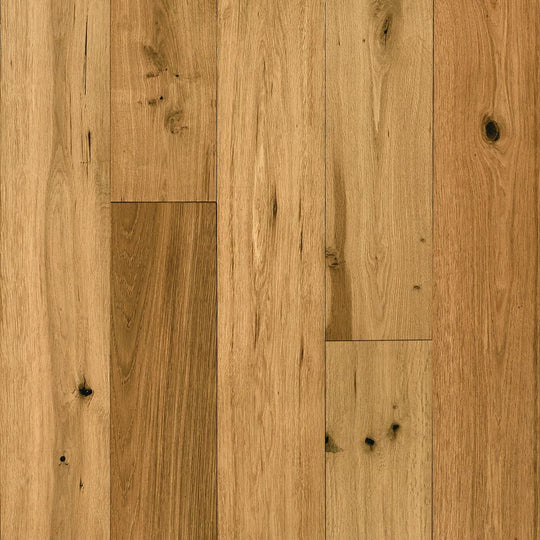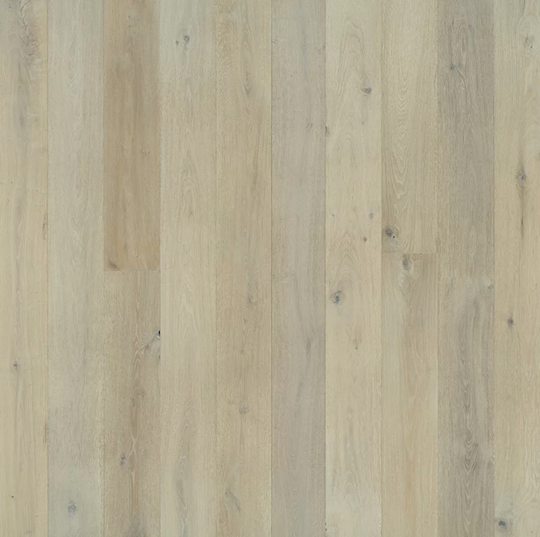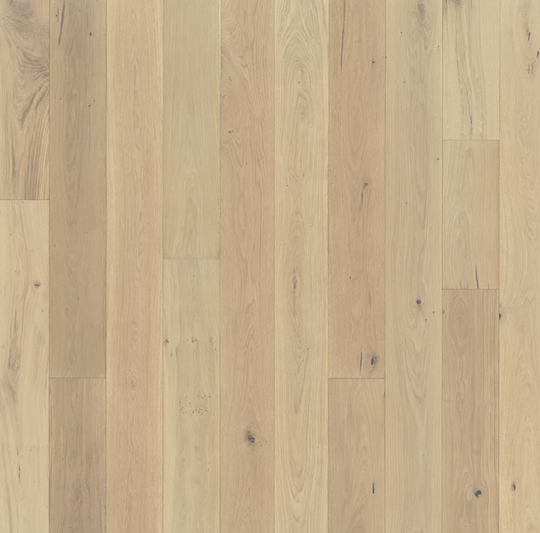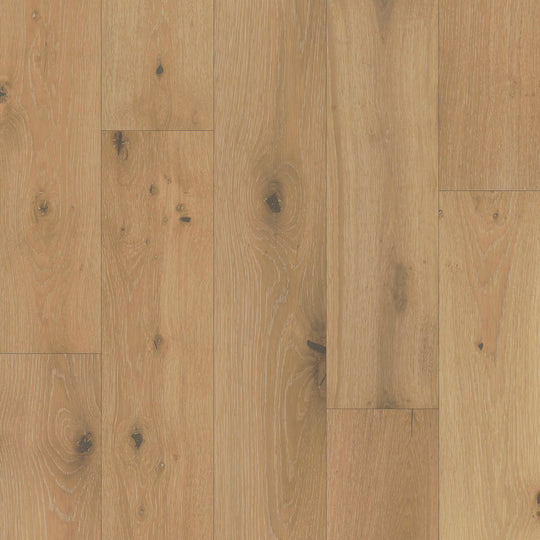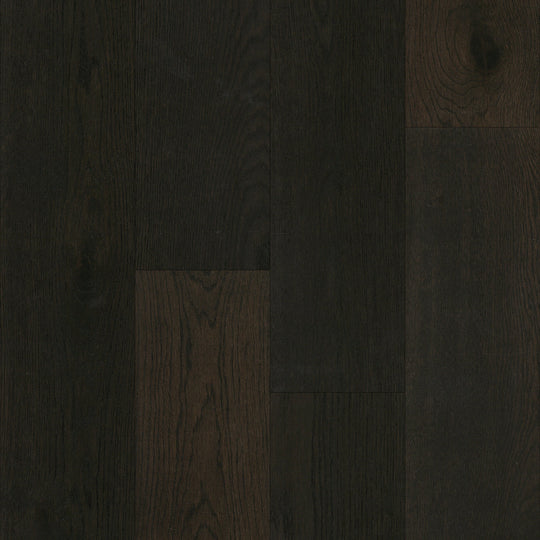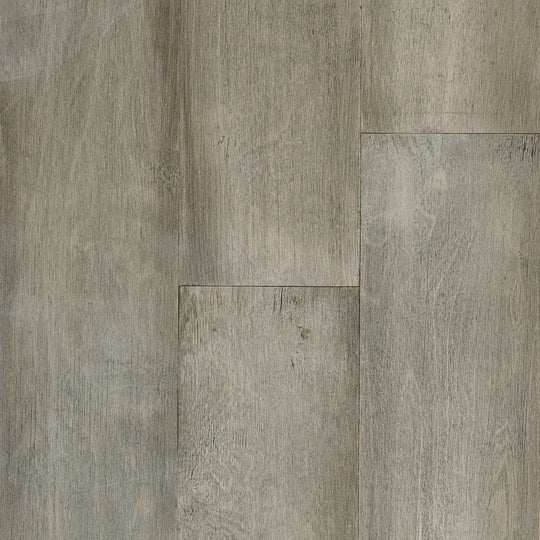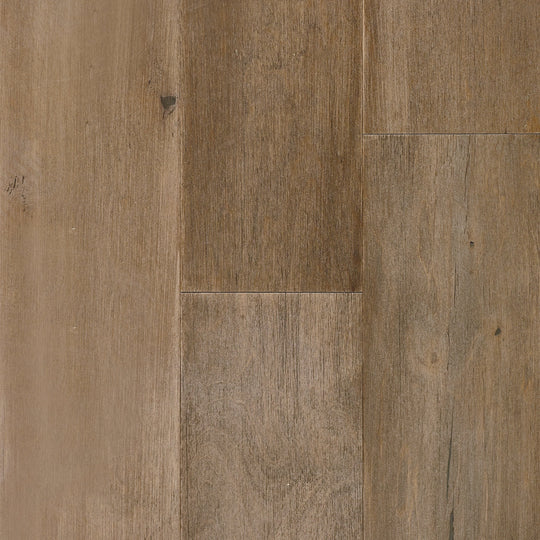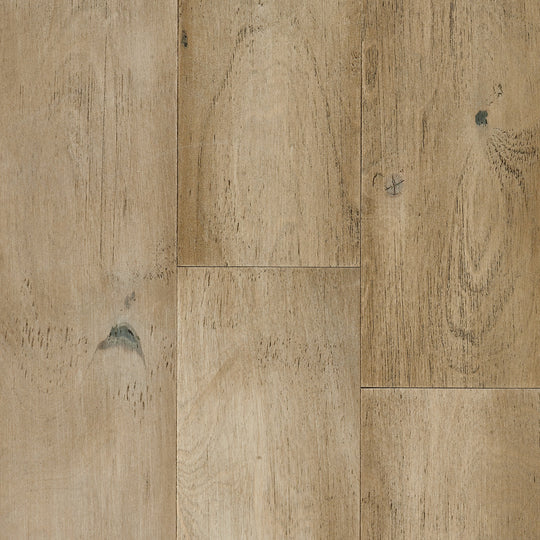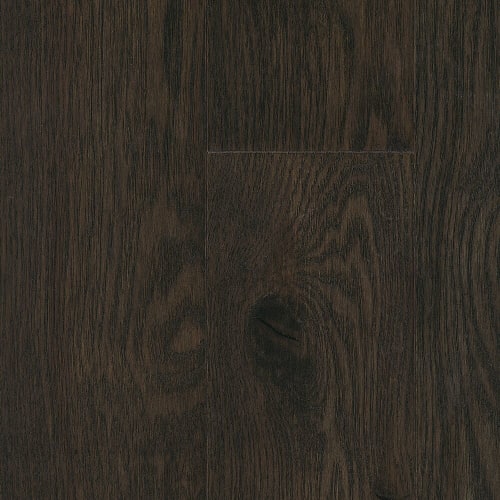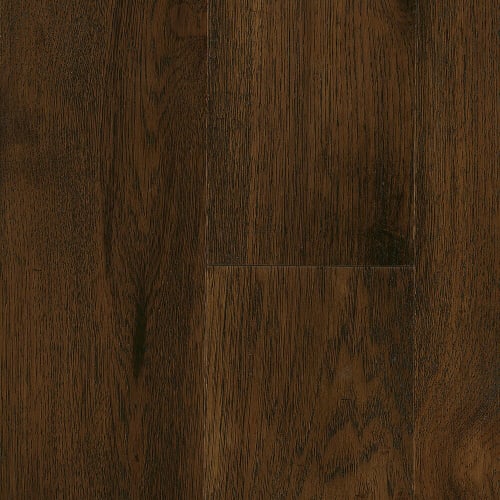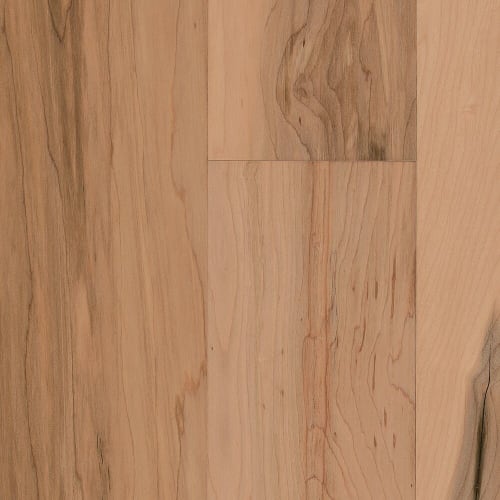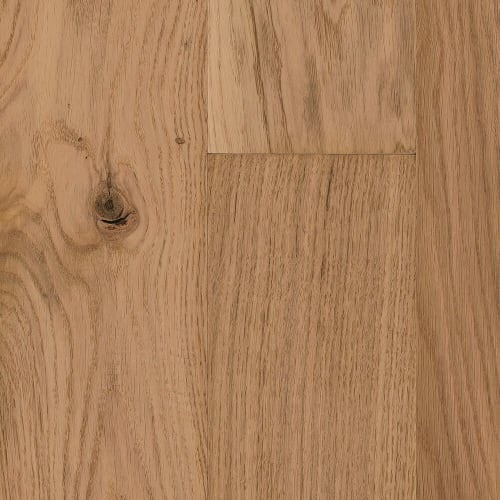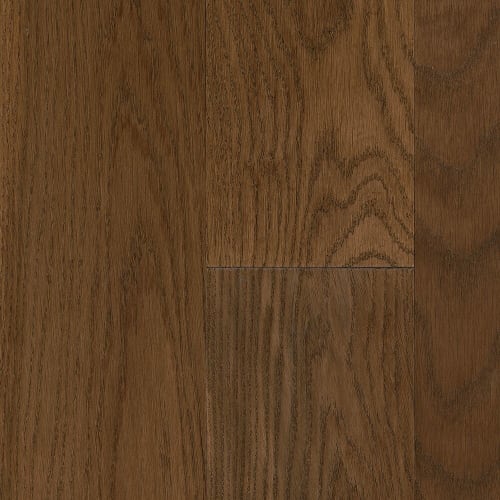For those who prefer the timeless elegance of natural materials that add unique character to the space, hardwood is the number one choice.
While hardwood might be notorious for its high cost, this isn't necessarily true. The cost largely depends on the quality and type of wood used, hence the wide price range of $3-$14 per square foot.
However, it is true that many of the people who decide on hardwood often aren't on a strict budget. This is because of the fact that with high-quality hardwood, you can get flooring that can last for generations and can be refinished 3-10 times (a number that often goes up with the price). This makes hardwood a safe investment because it doesn't lose value with time and increases your home's resale value.
Hardwood Design Options
While you might think hardwood floors are limited to the aesthetic of their original wood, there are actually numerous ways to enrich their design and offer additional choices.
Aside from the fact that different species of wood have unique grain patterns, colors, and textures, there are quite a few finishing techniques that can give different tones and styles to the final product.
For example, techniques such as hand-scraping, distressing, or wire-brushing can add texture and depth to hardwood floors, creating an aged or rustic appearance.
Hardwood can also be stained in a wide range of colors, from natural tones that highlight the wood's grain to darker stains that can give a room a more formal appearance. The choice of finish can also affect the wood's appearance, with options ranging from glossy to matte.
In addition, hardwood offers the most customization options when it comes to layout. The way the hardwood planks are laid is a big part of the overall aesthetic appeal. Common patterns that you should consider if installing hardwood include straight lay, diagonal lay, herringbone, chevron, parquet, and basket weave.
Hardwood Offers Superior Comfort
Hardwood is also known to rank pretty high in the comfort department. Hardwood provides natural warmth and a solid underfoot feeling that still offers more comfort compared to many harder materials.
Many people report that, given some time, hardwood becomes even more comfortable to walk on. This is because, over time, hardwood often develops a patina and slight softness that contribute to its underfoot feel.
It also performs very well when it comes to acoustics, with less echo and a more solid sound, which contributes to the overall perception of comfort and quality.
Hardwood Durability Performance
When it comes to durability, hardwood floors are clear champions. It is not unheard of that a hardwood floor can last even a century with proper care. The option to sand down and refinish hardwood floors multiple times allows them to shed years of wear and tear and come back looking brand new.
It's probably good to know that refinishing is not a small feat for a budget. The costs for hardwood refinishing range anywhere from $3 to $8 per square foot. But with proper care, you can easily go over 15 years without the need to refinish.
Hardwood needs some extra care because it cannot handle moisture and can be susceptible to scratches. However, if you use protective pads under furniture and clean the spills quickly, hardwood can remain beautiful for years.
Brands That Offer the Best Hardwood in Our Selection
-
Mannington - A balance of beauty and performance.
-
Paradiso - Luxury hardwoods at fair prices.
-
Liberty Home - Easy to install quick ship flooring.
-
Fabrica - Premium hardwoods focused on timeless beauty.
-
Hallmark - Beautifully designed collections.
-
Proximity Mills - High performance hardwood flooring.
-
Chesapeake - Hardwood that is quick ship and durable.
-
DH Floors - Made for those looking for affordable fashion.
-
Newton - For those looking for something functional and affordable.


